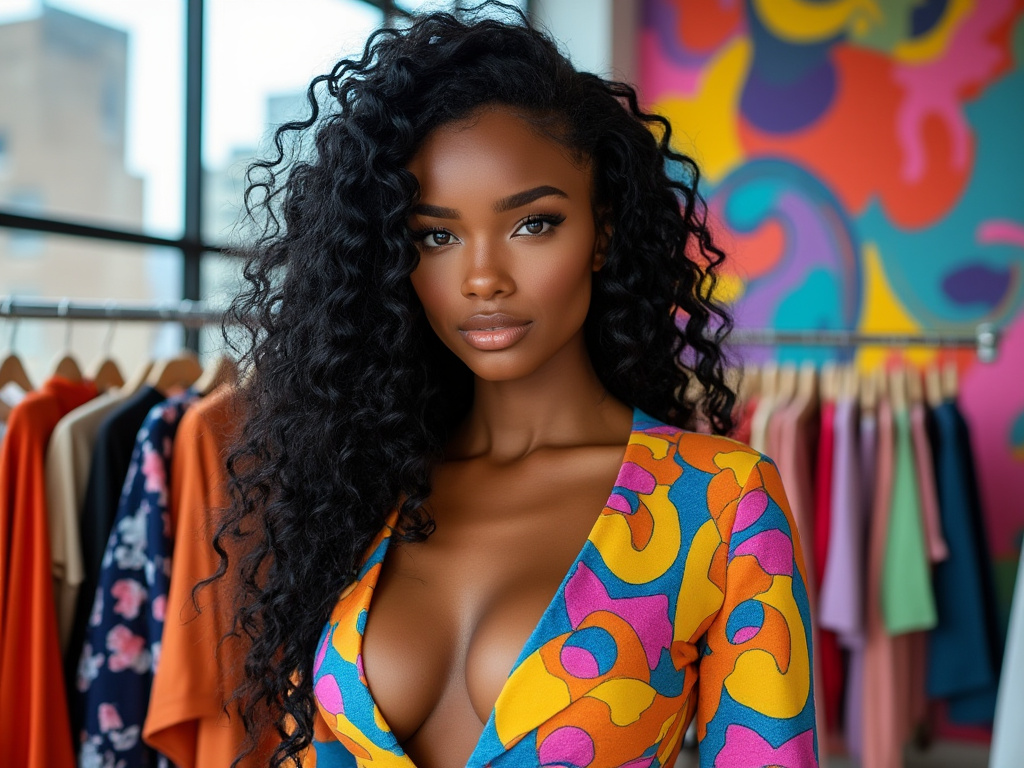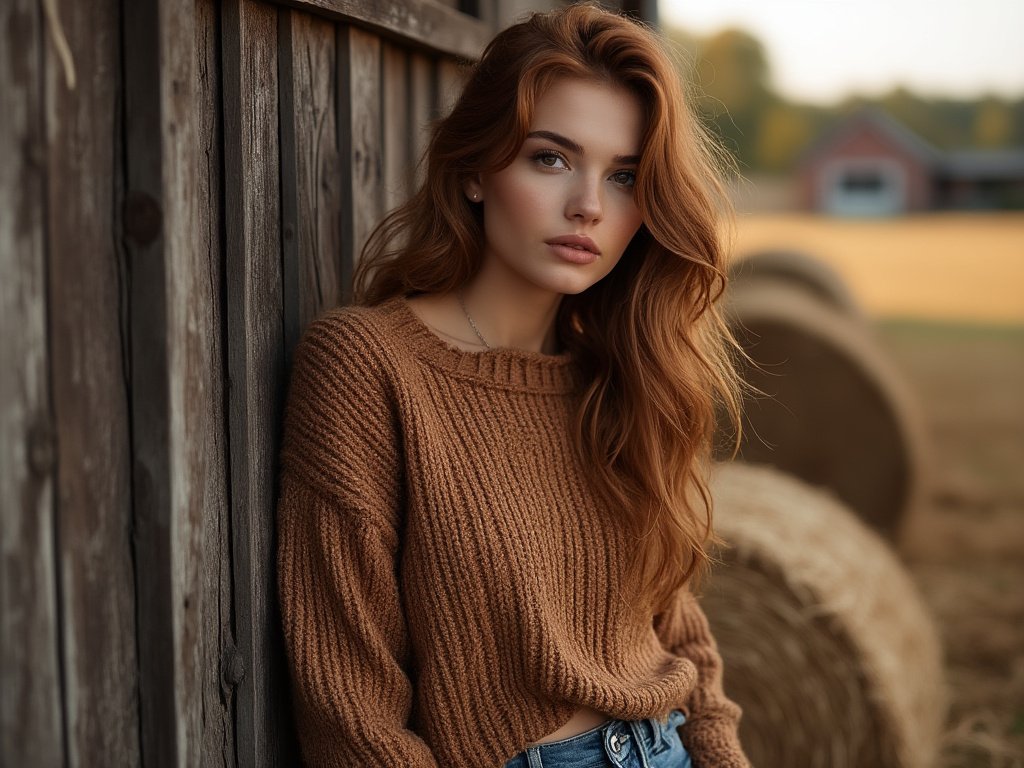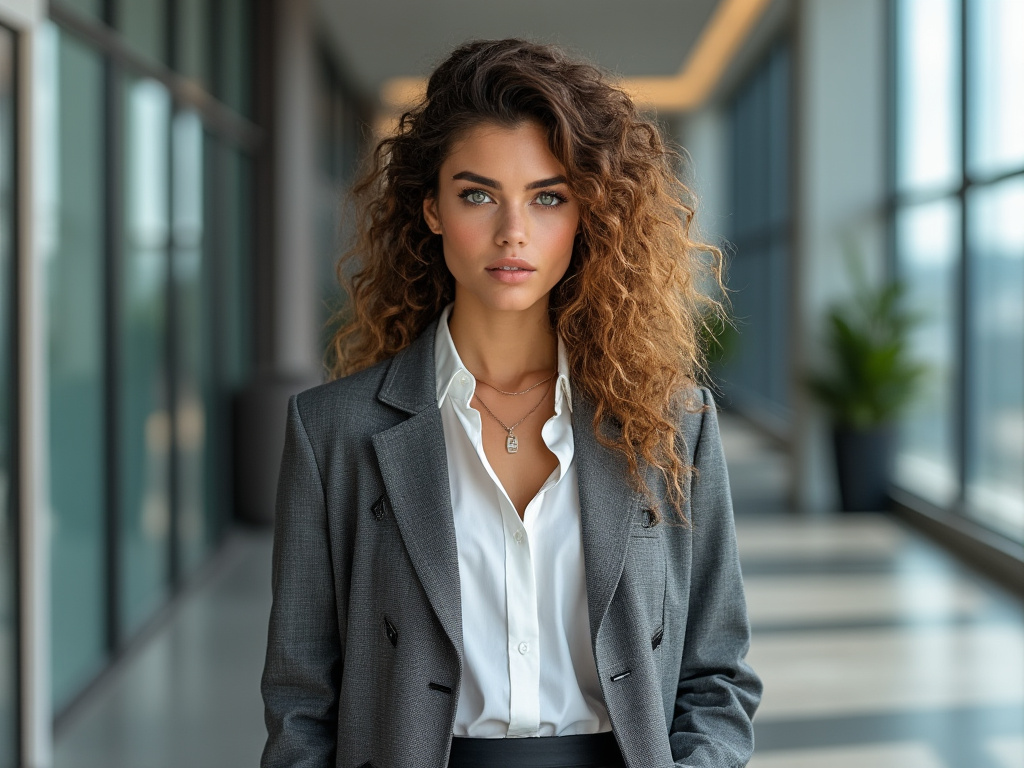Color isn’t just a style choice—it’s a form of non-verbal communication that can instantly influence how you’re perceived and how you feel. In fashion, the psychology of color plays a powerful role in expressing confidence, personality, and even mood.
Whether you’re dressing to stand out, feel empowered, or set the tone for the day, each color choice carries meaning. This guide explores the fascinating connection between color and clothing—revealing what your outfit colors say about you and how to use them intentionally.

The Power of Colors in Fashion
Fashion is so much more than fabric—it’s an expression of who we are. Our outfits help us embody the roles we want to play, express our personalities, and adapt to our environments.
Color plays a major role in these expressions. There’s a whole branch of psychology dedicated to understanding how different colors make us feel and how they impact those around us. From boosting our mood to making a bold statement, colors shape our perceptions and experiences.
When we think about colors in fashion, it’s essential to remember that different hues have distinct impacts depending on cultural significance, individual personality, and even fashion trends of the time. So what exactly does your favorite outfit color say about you? Let’s break it down.
Red: The Color of Passion and Power
If you’ve ever put on a red dress or blazer, you might have noticed a sudden surge of confidence. That’s not surprising—red is a color associated with passion, energy, and power. It’s a color that turns heads and makes an impression. Wearing red is a powerful move, whether you’re looking to feel bold on a date, assert your presence during a meeting, or just stand out in a crowd.
Psychologically, red can make your heart race, symbolizing vitality and excitement. It’s often used in fashion to attract attention—think about the classic red carpet or a bold pair of red heels. If you want to be seen, wear red. On the flip side, red can also be associated with danger or aggression, so it’s important to balance it. A full red outfit might be intimidating, but a red accent can work wonders.
Practical Tip: Wear red if you want to stand out and make a statement. It’s perfect for occasions when you need a confidence boost—like a job interview, a first date, or a public speech.

Blue: Calm, Trustworthy, and Confident
Blue is a universally loved color, often seen as calm, peaceful, and reliable. It’s no surprise that blue is a common choice for business attire. A navy suit communicates confidence and professionalism. Blue also helps create an approachable vibe—a great color to wear when you want to appear trustworthy and open-minded.
But there’s more to blue than just reliability. Different shades evoke different feelings. Light blues have a relaxing quality, often reminding us of clear skies and calm oceans, whereas darker blues like navy exude confidence and authority. Wearing blue can help you feel centered, focused, and in control, without coming across as intimidating.
Practical Tip: Blue is ideal for work settings, negotiations, and presentations. If you want to appear approachable but composed, consider integrating blue tones into your wardrobe.

Yellow: The Bright, Cheerful Optimist
Yellow is the color of sunshine, happiness, and energy. It’s a bold choice that represents optimism and creativity. People who wear yellow are often seen as upbeat and adventurous, willing to take risks. But yellow is also a tricky color to wear—it’s bright and can sometimes be overwhelming.
Psychologically, yellow can stimulate mental activity and creativity, making it a good choice when you want to feel inspired. But it’s also worth noting that, in some cases, yellow can signal caution or anxiety. So, if you love yellow but feel overwhelmed by it, consider using it as an accent color—a yellow scarf or handbag can brighten up any outfit without overpowering it.
Practical Tip: Use yellow when you want to feel joyful and creative. Yellow accessories or layering can make an outfit pop without the need for an all-yellow look.

Green: Balance, Growth, and Harmony
Green is often associated with nature, growth, and balance. It’s a color that conveys a sense of stability and calmness. Wearing green can help you feel grounded and in harmony, making it a great choice for times when you need to relax or connect with others.
Different shades of green bring different connotations. Olive green has a natural, earthy quality that’s often associated with comfort and practicality, whereas emerald green is rich and luxurious, perfect for making a sophisticated statement. Whether you’re attending a casual outdoor event or a formal gathering, green’s versatility makes it an easy color to style.
Practical Tip: Green is perfect for when you want to feel balanced and comfortable. Consider it for informal gatherings, days when you need a mood boost, or events where you want to convey a natural, relaxed persona.

Black: The Classic, Timeless Elegance
Black is the most versatile color in fashion. It can symbolize elegance, power, and mystery. It’s a color that’s often associated with formality, but it’s also the go-to for anyone seeking a touch of sophistication. The saying “you can never go wrong with black” holds true—it works for any occasion, from formal events to a casual day out.
Psychologically, black can be seen as protective and authoritative. It’s a color people wear when they want to create a boundary—to be taken seriously. A black outfit gives an impression of strength and self-control. However, too much black can also come across as distant or unapproachable, so balancing it with softer colors can help.
Practical Tip: Wear black when you want to feel sophisticated and powerful. A little black dress is a classic for a reason, but consider pairing it with softer accessories if you want to tone down the intensity.

Pink: Compassion, Femininity, and Playfulness
Pink is a color often associated with love, compassion, and sensitivity. It’s a softer, more playful version of red that can evoke feelings of warmth and approachability. While traditionally seen as a feminine color, pink has made a modern resurgence in fashion for all genders.
The shade of pink matters: a hot pink can make a bold, rebellious statement, while a blush pink gives off a soft, romantic vibe. Wearing pink can help you feel nurturing and connected—great for social gatherings or casual days when you want to feel more in tune with your emotions.
Practical Tip: Pink is perfect for creating a friendly and affectionate atmosphere. Wear pink when you want to connect with others on an emotional level—it’s great for dates, family gatherings, or friendly get-togethers.

White: Purity, Simplicity, and Fresh Beginnings
White symbolizes purity, simplicity, and new beginnings. It’s a color that feels clean and fresh, often associated with innocence and light. Wearing white can convey a sense of openness and simplicity. It’s an excellent color for those who want to start fresh or give off a minimalist vibe.
White can also be a statement of confidence—after all, it takes a bit of boldness to wear white and keep it spotless. It’s often worn during summer, reflecting light and keeping us cool while exuding a carefree, light-hearted spirit.
Practical Tip: White is ideal for occasions when you want to project simplicity and freshness—think summer gatherings, outdoor events, or even an important meeting where you want to convey clarity of thought.

Purple: Royalty, Creativity, and Mystery
Purple has long been associated with royalty, luxury, and mystery. It’s a color that can evoke creativity and imagination, making it a favorite for those who think outside the box. Wearing purple suggests that you’re in touch with your emotions and are not afraid to express your uniqueness.
Lighter shades like lavender are soothing and can give off a romantic, whimsical vibe, while deeper purples are associated with richness and depth. Purple is a great color to wear when you want to feel regal or channel a creative spirit.
Practical Tip: Wear purple when you want to feel inspired and stand out with a sense of mystique. It’s great for creative gatherings, art shows, or any event where you want to embrace your individuality.

Orange: Enthusiasm, Energy, and Adventure
Orange is a color full of life, representing enthusiasm, energy, and adventure. It’s a bold choice that’s less aggressive than red but still very attention-grabbing. Orange is often associated with warmth and positivity, making it a great choice for when you want to exude approachability and energy.
In fashion, orange can be a little challenging to pull off, but when done right, it can add a lot of fun to an outfit. It’s a great choice for casual events, outdoor gatherings, or any time you want to embrace a playful, energetic spirit.
Practical Tip: Wear orange when you want to add a sense of fun and adventure to your outfit. It’s perfect for social events or days when you want to feel more upbeat and positive.

Brown: Stability, Comfort, and Earthiness
Brown is a color that exudes stability, reliability, and earthiness. It’s often associated with nature and conveys a sense of comfort and warmth. Wearing brown can make you appear dependable and grounded. It’s a great color for creating a relaxed, natural look.
Different shades of brown have different effects: lighter browns like tan can feel more casual and approachable, while deeper browns can add a sense of sophistication without being as formal as black. Brown is perfect for those days when you want to feel connected to nature and give off a relaxed vibe.
Practical Tip: Brown is perfect for casual, comfortable settings. Wear it when you want to feel grounded and approachable—it’s great for weekends, casual meet-ups, or any time you want to keep things low-key.

Gray: Neutrality, Sophistication, and Balance
Gray is a neutral color that represents balance and sophistication. It’s often seen as conservative and formal, making it a popular choice for business attire. Gray can help you feel composed and put-together, making it a great option for situations where you want to be taken seriously.
The beauty of gray lies in its versatility. It pairs well with almost any color, making it an excellent base for outfits. Whether you choose a light gray for a softer, more approachable look or a dark charcoal for a strong, authoritative vibe, gray has a way of adapting to your needs.
Practical Tip: Gray is perfect for professional settings or when you want to keep your look understated and elegant. Pair it with a pop of color to keep it from feeling too monotonous.

Colors and Cultural Significance
It’s important to remember that the meanings of colors can vary significantly across cultures. For example, in Western cultures, white is often associated with purity and weddings, while in some Eastern cultures, white is a color of mourning.
Red can symbolize love and passion in some places, but in others, it may represent prosperity or luck. Being mindful of cultural contexts when choosing colors is especially important if you’re traveling or attending a culturally significant event.

Building Your Wardrobe with Color in Mind
Now that you understand what different colors can convey, how can you use this knowledge to build a wardrobe that aligns with your personal style and goals? Here are some practical tips:
- Identify Your Intentions: What message do you want to convey on a given day? If you’re going for a job interview, blue might be your best bet to appear calm and trustworthy. If you’re heading out for a night of fun, red or orange could set the tone.
- Know Your Skin Tone: Different colors work better with different skin tones. Warm-toned individuals often look great in earthy colors like orange, red, and brown, while cool-toned people might shine in blues, purples, and greens.
- Mix and Match: Don’t be afraid to mix colors to create different effects. Pairing a bold color with a neutral can help tone it down while still making a statement. For example, pairing a red blouse with gray pants can create a balanced yet confident look.
- Use Accessories: If you’re not ready to commit to a bold color, start with accessories. A bright handbag, scarf, or pair of shoes can add a pop of color to an otherwise neutral outfit, allowing you to experiment without feeling overwhelmed.
- Experiment and Have Fun: Fashion is all about self-expression, so don’t be afraid to step outside your comfort zone. Try different colors, observe how they make you feel, and adjust based on your preferences.

Final Thoughts: Dressing with Color Confidence
Color is a powerful tool in fashion, capable of transforming not only how others perceive us but also how we feel about ourselves.
By understanding the psychology behind colors, you can curate a wardrobe that empowers you, boosts your mood, and helps you present your best self to the world.
Whether you’re dressing to impress, to feel comfortable, or to make a statement, let color be your secret weapon.
So next time you open your closet, consider what story you want your outfit to tell—because the right color can speak louder than words.


Brenda Tillman is a color maestro who brings artistic brilliance to every piece she crafts. Passionate about imaginative expressions, she illuminates the world of fashion with her expert guidance on shades and combinations. Beyond her writings, Brenda is a culinary enthusiast and a global traveler, infusing her work with diverse insights. Her unique touch transforms simple color choices into art.
Reviewed By: Joanna Perez and Anna West
Edited By: Lenny Terra
Fact Checked By: Matthew Mansour
Photos Taken or Curated By: Matthew Mansour
